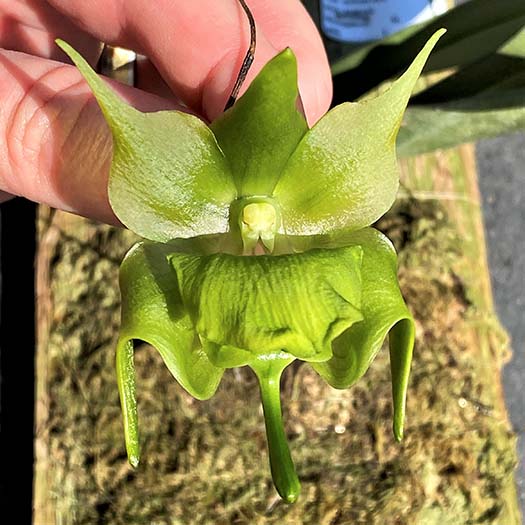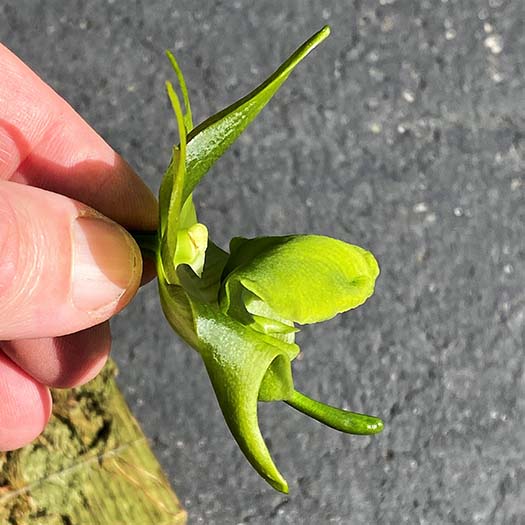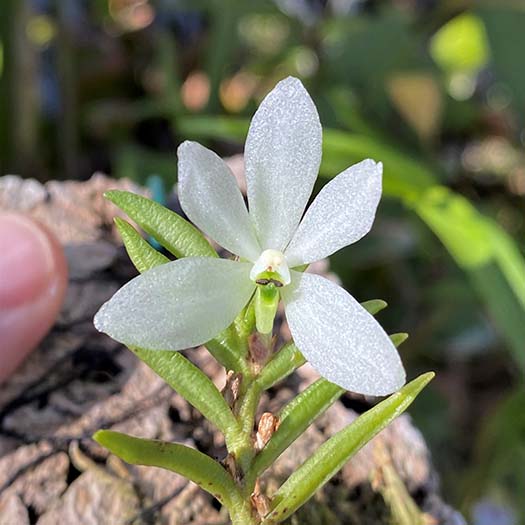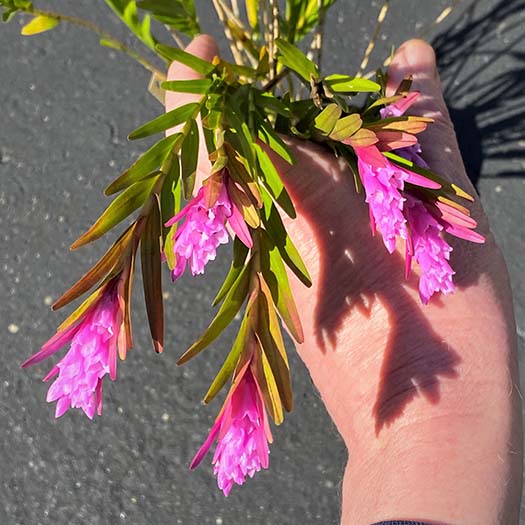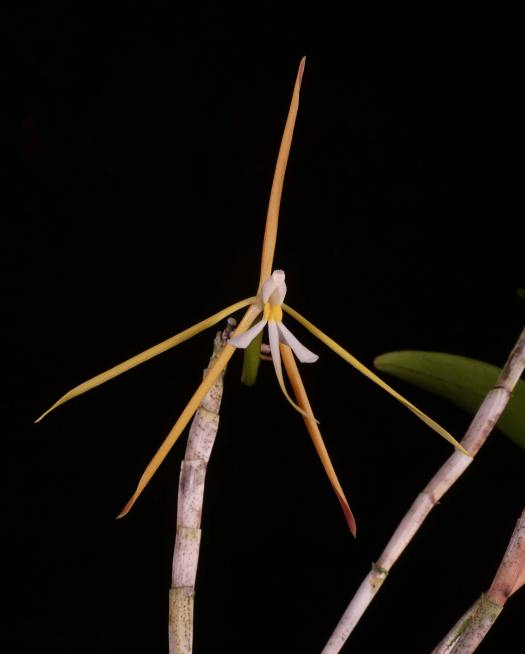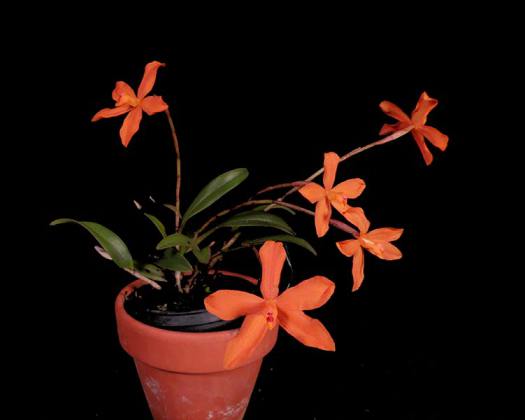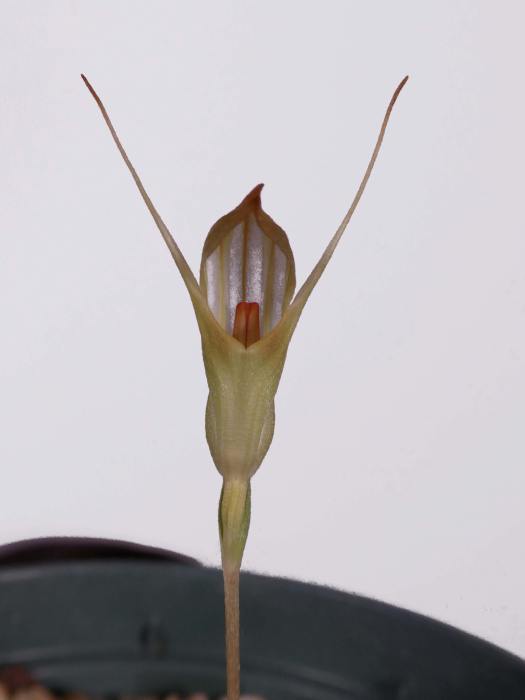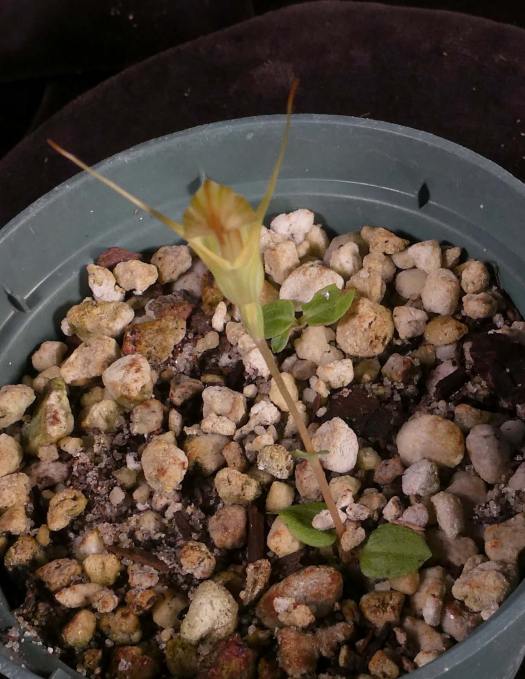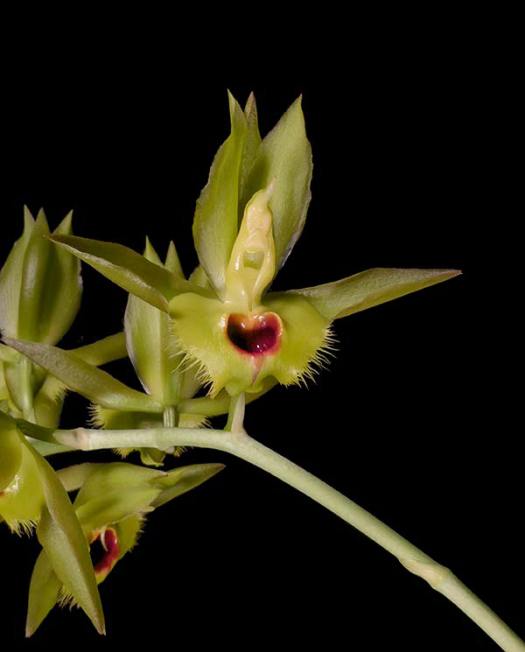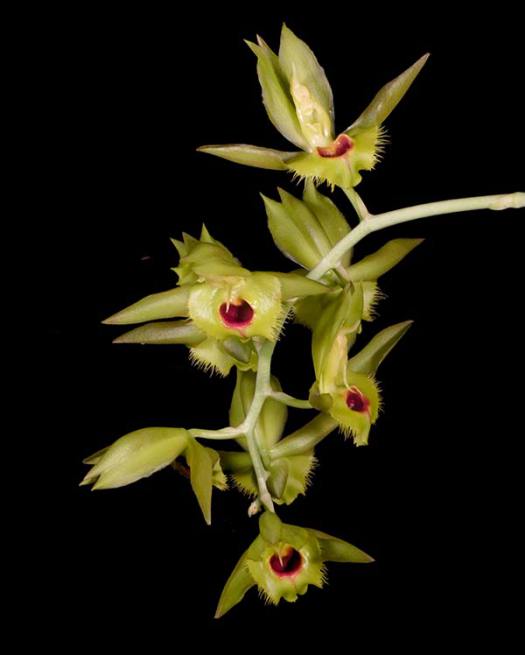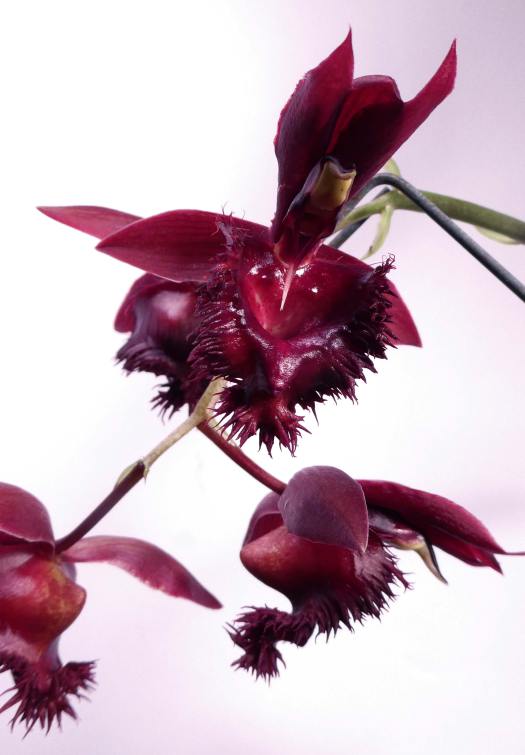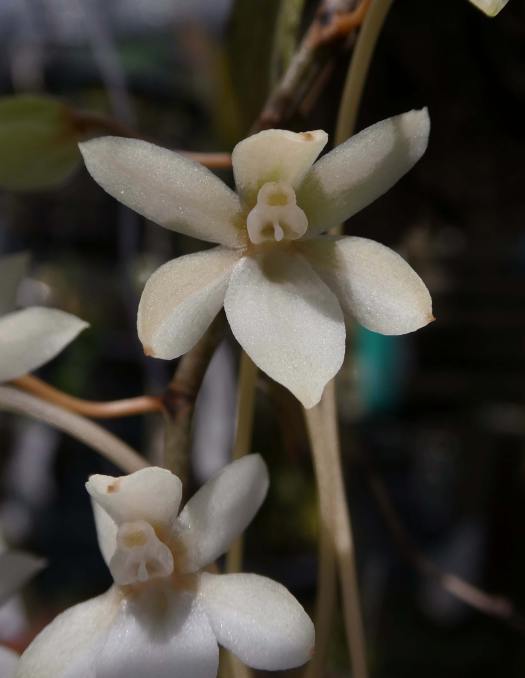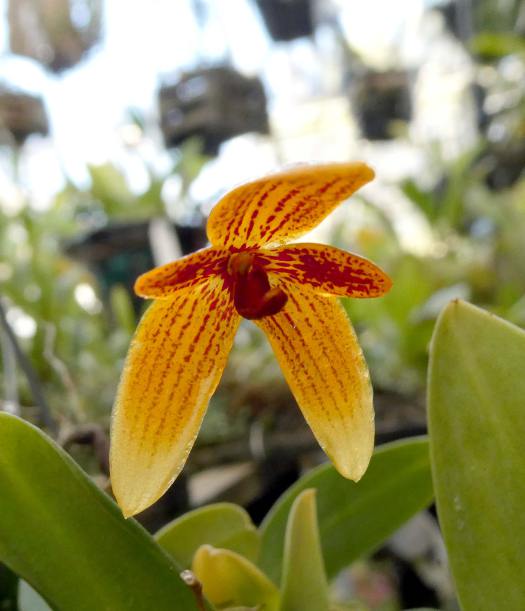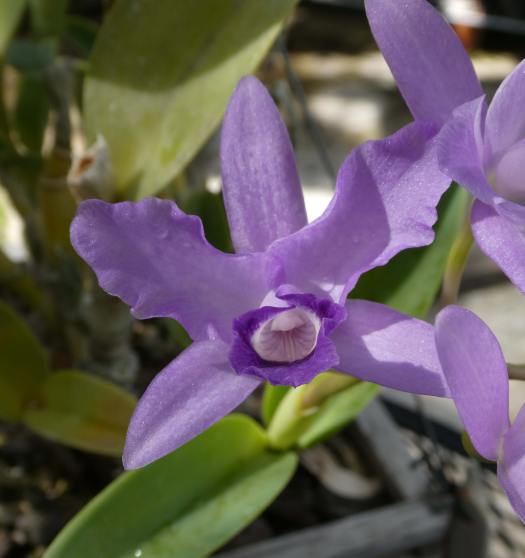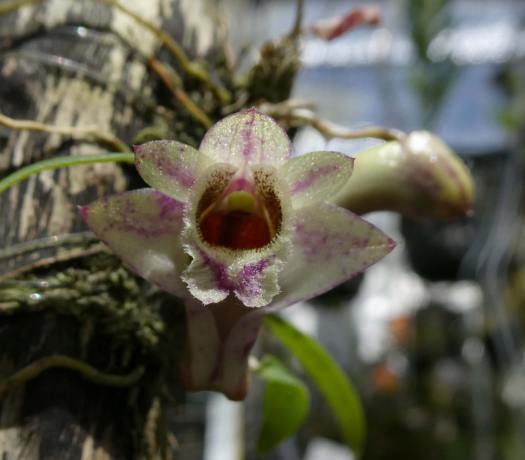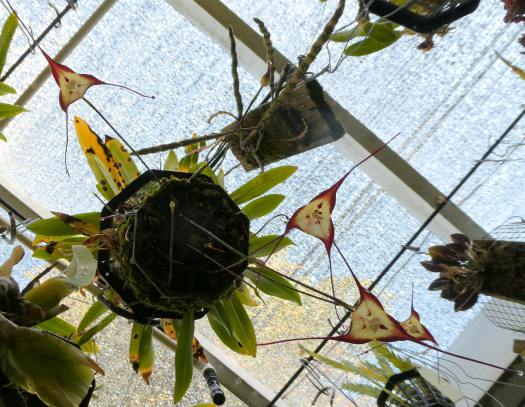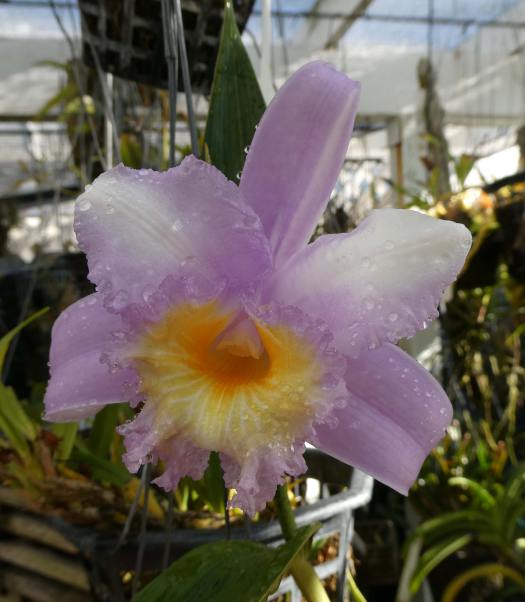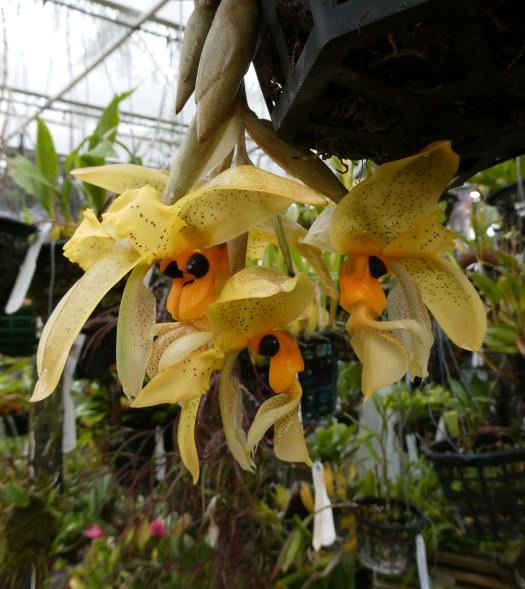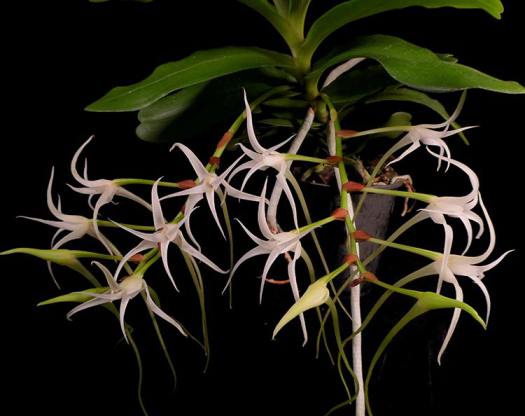October 2021
From Lynn Wiand:All orchids grown outdoors, coastal southern California |
|
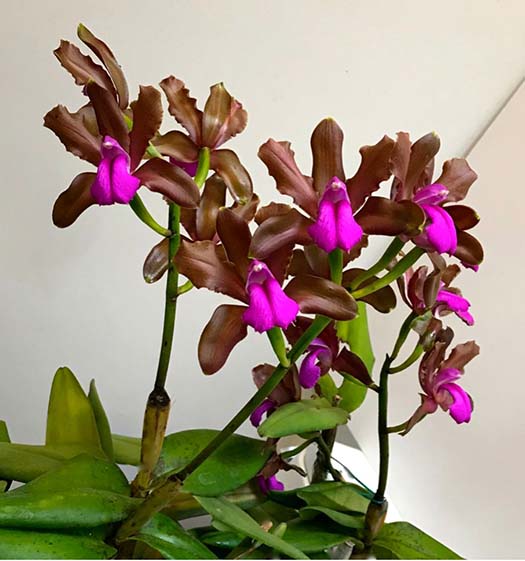
Cattleya bicolor3 spikes with 5 flowers and another spike with 4 flowers |
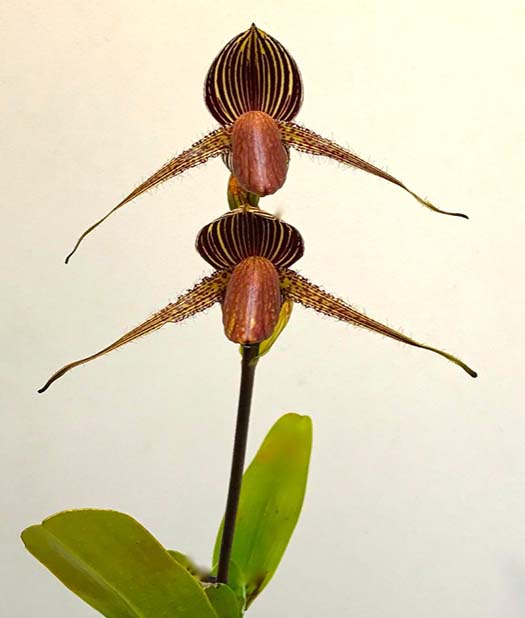
Paphiopedilum rothschildianumFrom Borneo |
From Scott McGregor:All orchids grown outdoors, coastal southern California |
|
Aeranthes ramosaMost Aeranthes need warmth and humidity and so don’t fare well outside in California, as we have typically one or the other but not both. A. ramosa comes from Madagascar and grows at 1000-1500 meters, but seems to handle cold well enough to do well outside here. It prefers shade and moisture, and bears flowers singly on long wiry scapes that branch and bloom sequentially. The flowers are fleshy/waxy and yes, they really are bright green. |
|
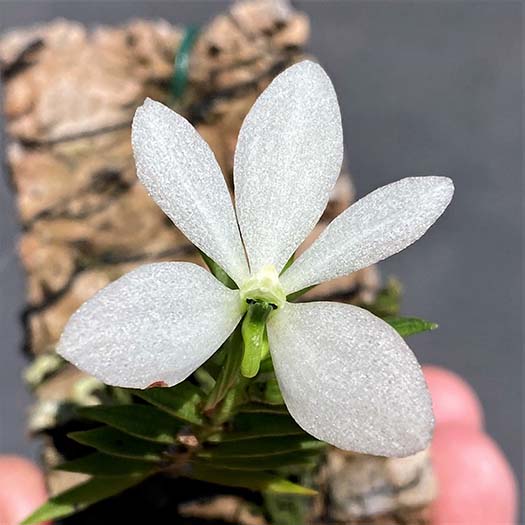 |
|
Ceratochilus biglandulosusTiny and cute plant with a (relatively) huge crystalline white long-lasting flower. Blooms twice a year for me, usually with a single flower but sometimes two. |
|
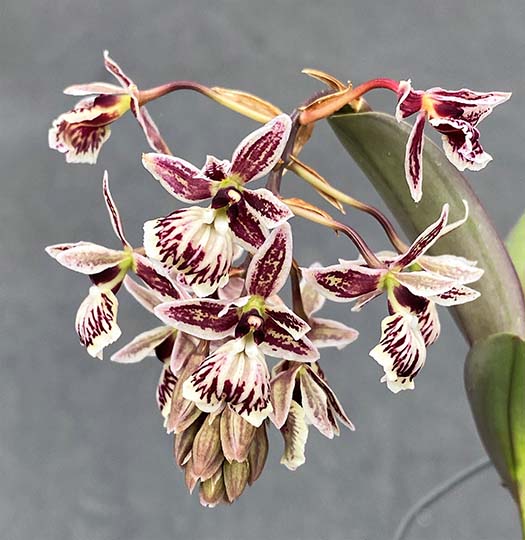 |
Epidendrum marmoratumLong-lasting 1” flowers that have some kind of artificial look to them from the high-contrast coloration. Not fragrant, but easy to grow outside. |
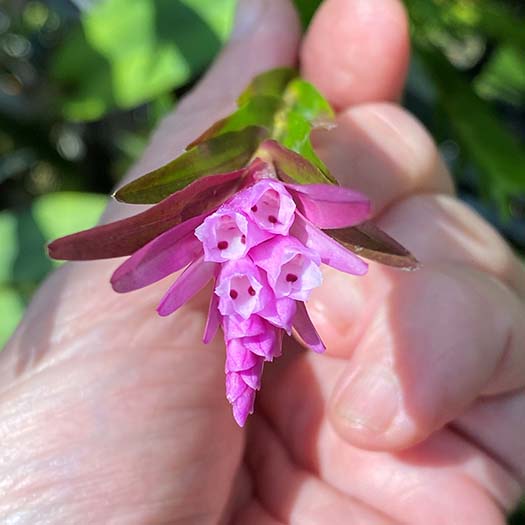 |
|
Isochilus major 'Santa Barbara'A bright splash of intense magenta! Note the magenta coloration in the terminal leaves/bracts. |
|
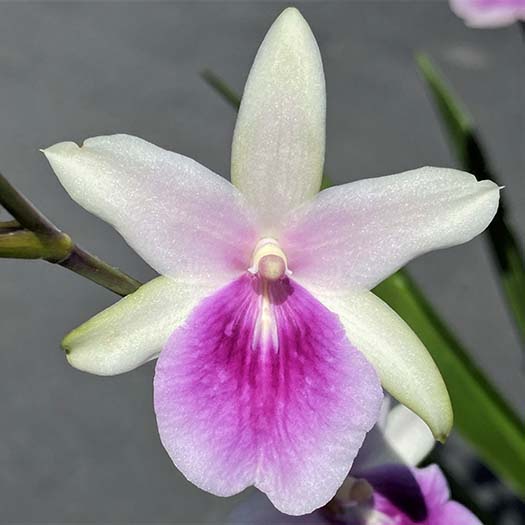 Miltonia regnelilEast to grow and reliable September species. Fragrant too. |
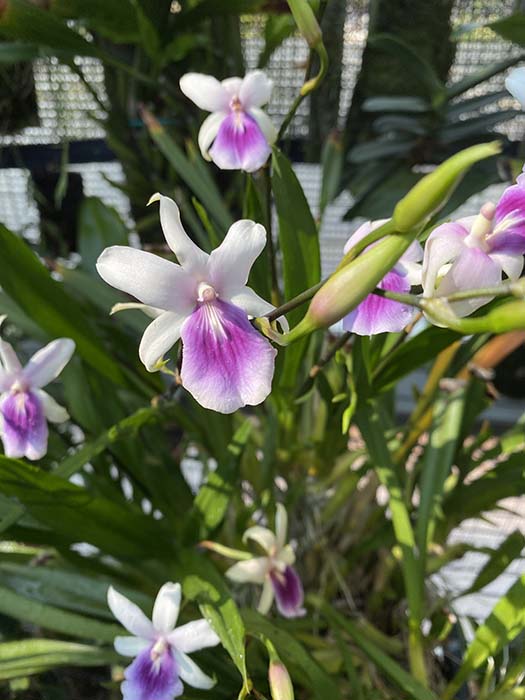 |
From Roberta Fox:
|
|
Outside in the Back Yard: |
|
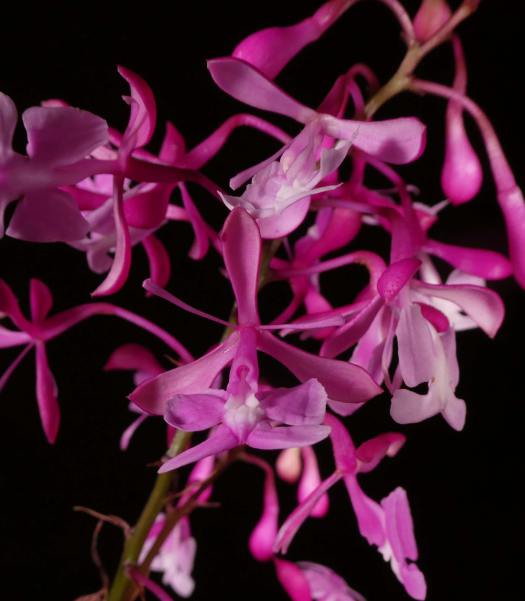 Epidendrum nanegalenseNative to Ecuador. Hot-pink flowers are dramatic, and the plant can get quite tall. This one is a bit over 2 feet, but future growths can be much larger. |
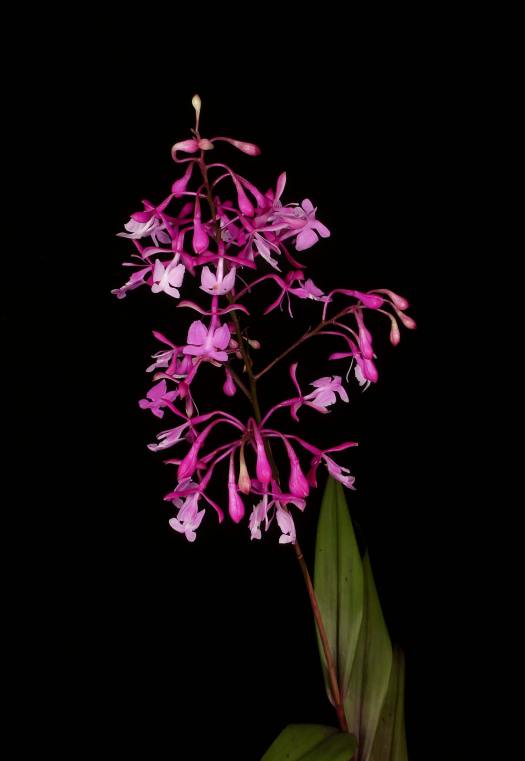 |
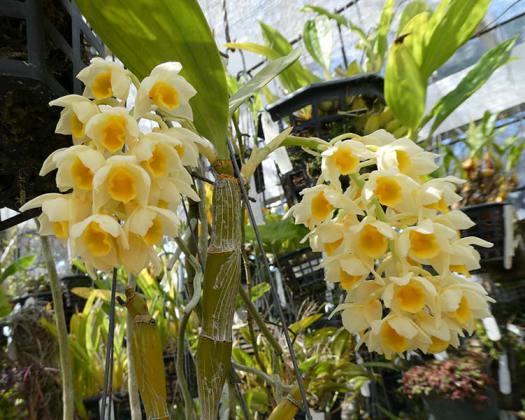
Dendrobium farmeriOne of the Himalaya - southeast Asia Dendrobiums. It is semi-deciduous, but I don't particularly dry it out, and that certainly hasn't inhibited blooming. Flowers are fairly short-lived, so enjoy it in the moment. |
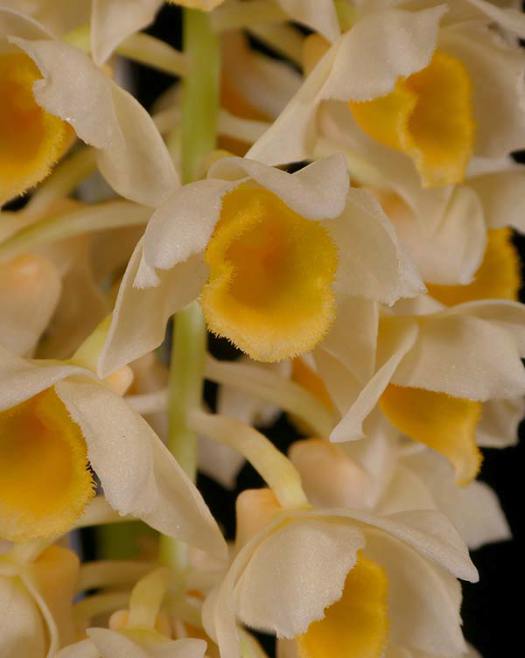 |
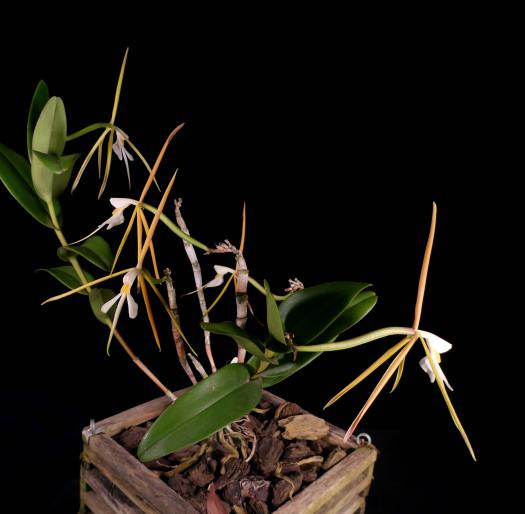
Epidendrum nocturnumNative to a wide area of South America over a range of elevations - I have seen it in Ecuador and also along the Rio Negro in Brazil. It is clearly very adaptable, doing nicely on my patio. This year I got 5 flowers, best blooming ever. Note that the can bloom on both bare and leafed canes. Flowers are night-fragrant. |
|
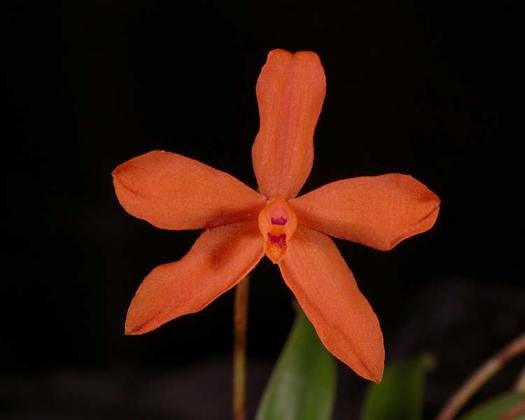 |
|
Neocogniauxia monophyllaThis is a totally charming, and unusual miniature orchid from the Blue Mountains of Jamaica (the home of the famous high-elevation coffee). It is a member of the Cattleya tribe. It is in a 2 inch plastic basket, placed in a 3 inch clay pot for the weight. Spikes are 3-4 inches, flowers a bit over an inch wide. Last year it had 5 spikes but 3 blasted. This year, all 5 bloomed. I think it really liked the relatively cool summer. Just for the record... pronounced Neo-co-nee-o-ia. (Named for the Belgian botanist Célestin Alfred Cogniaux) |
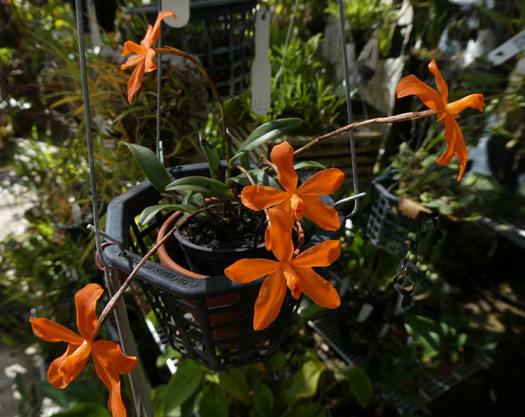 |
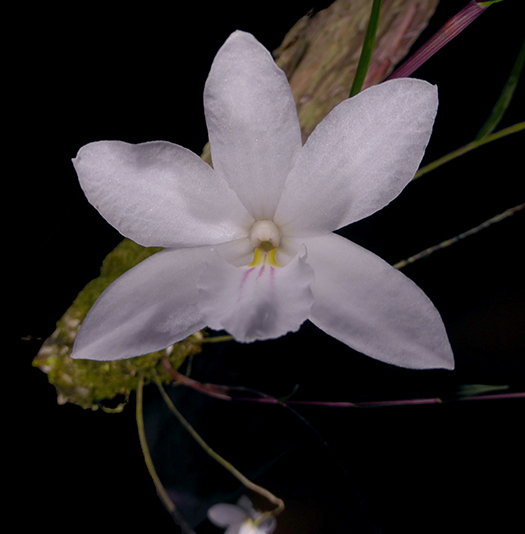
Dendrobium papilioThis is the small-flowered form, which is also more floriferous than the large-flower form. Both grow outside nicely. They are native to 1400-2200 meters elevation in the Philippines. |
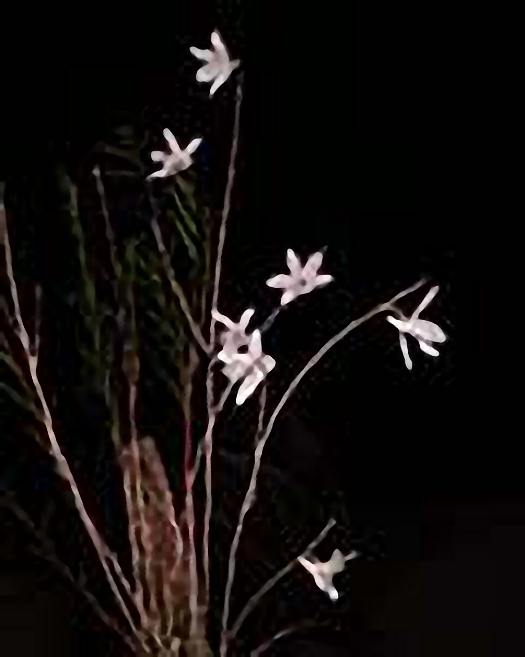 |
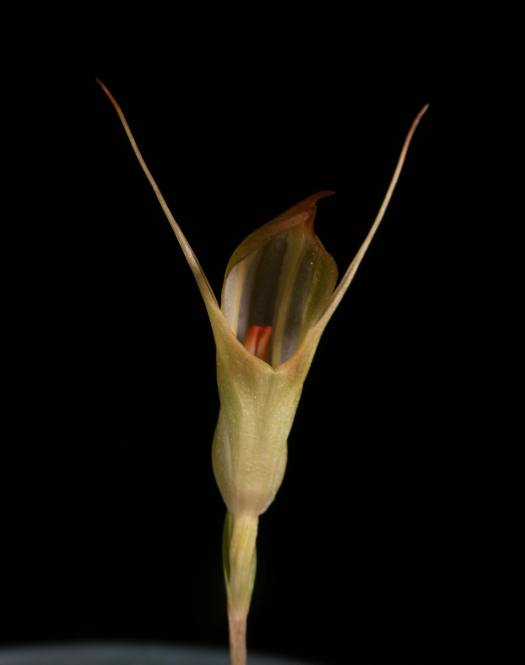 |
|
Pterostylis x-furcillata
|
|
Catasetum osculatumA first-bloom seedling. I'll move this, and the rest of the Catasetinae, to the greenhouse when nights drop below 55 deg. F, but they are outside during the growing season. If you don't have a greenhouse, these can easily spend the winter in the house - once they go dormant they don't take up much room, don't need any care. And even while they still have leaves, at the end of the season don't really need that much in the way of growing conditions, they are already slowing down. |
|
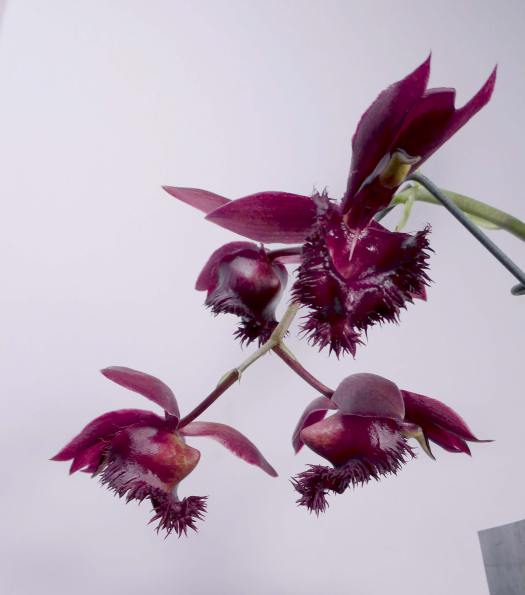
Catasetum fimbriatum var. morrenianumThe typical form of Ctsm. fimbriatum is mostly green, this variety is dramatic. |
|
 |
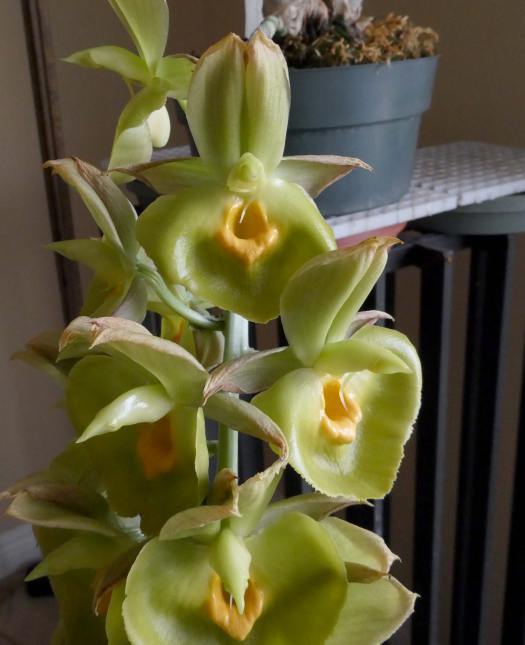
Catasetum expansumThis plant typically blooms at least twice during the season. Not labeled as such, but I think that this would be considered an alba, since there is no hint of any red pigment. There is another form where the callus is bright red. |
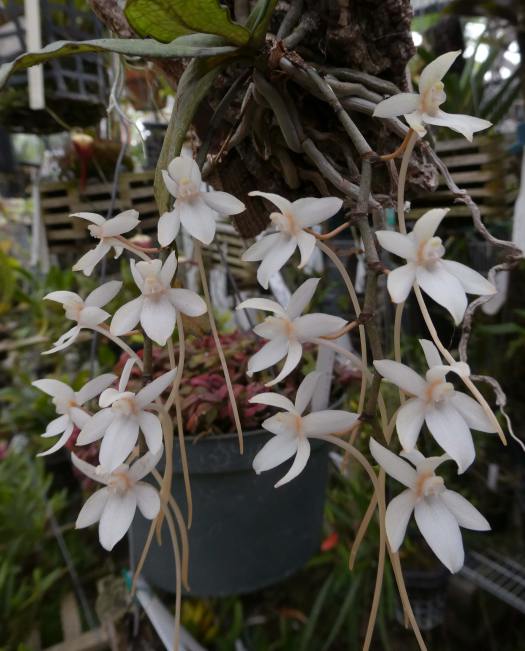 |
|
Aerangis mystacidiiAn Angraecoid from a wide area of Africa. |
|
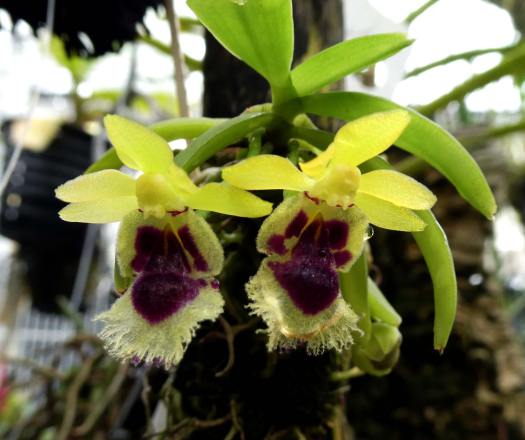
Haraella retrocallaTiny plant with flowers that are nearly an inch, and very fragrant. A given spike will produce several flowers sequentially. |
|
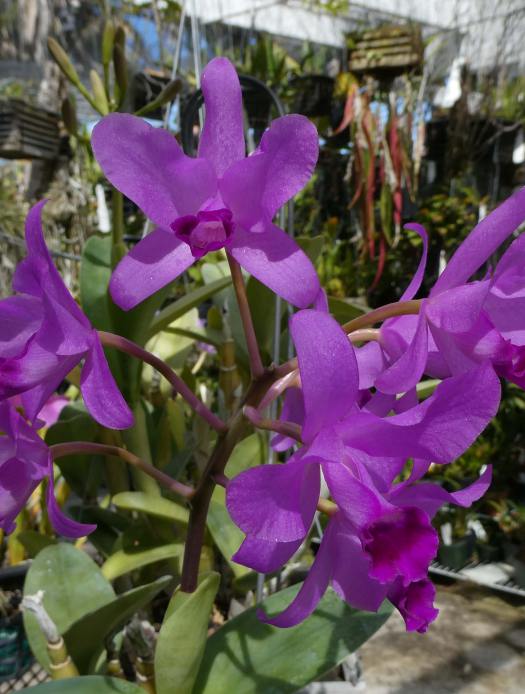 Guarianthe (Cattleya) bowringiana typical |
|
These were photographed under the same natural lighting conditions, for comparison. |
|
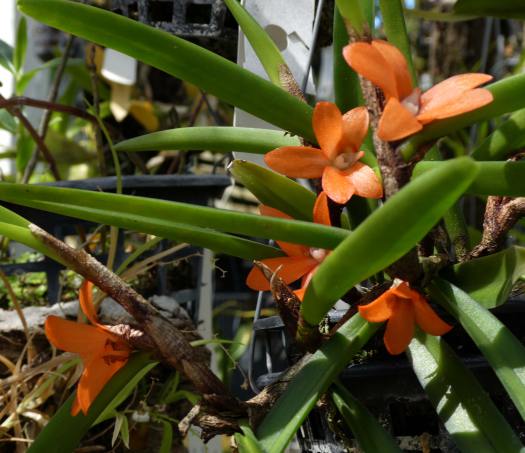
Ceratostylis retisquama (rubra)Native to the Philippines, it has a reputation as a warm grower. However, it does very nicely outdoors. When I bought it, the seller had it listed as "cool to warm" and so inquired about the conditions under which it had been grown. The greenhouse went down to 40 deg F, so it was clear that it would do fine. It blooms several times a year, when it produces multiple flowers in sequence. |
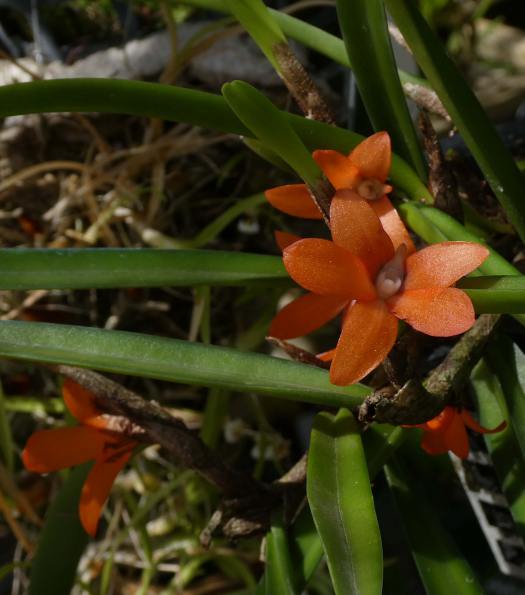 |
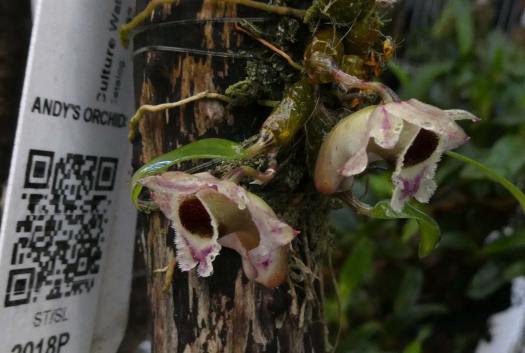
Dendrobium hekouenseA mniature with flowers as big as the plant. I included the tag to give an idea of the scale. Native to Yunnan, China. |
|
 |
|
Dracula cordobaeMy Draculas are just loving our cool weather. I was able to get four flowers into one photo, there are 5 or 6. They partially collapse in the heat of the day, so they are best viewed first thing in the morning when they are fully open. |
|
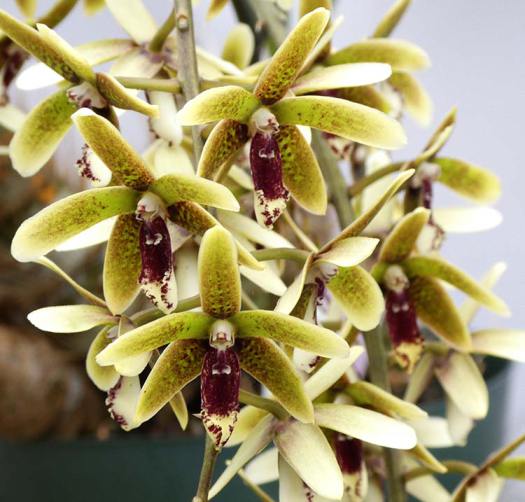 |
|
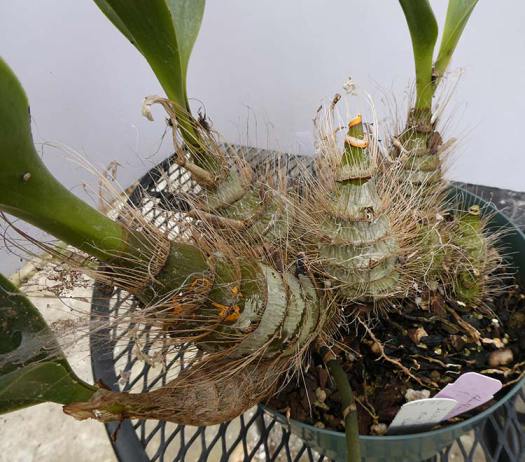 |
|
Inobulbon (Dendrobium) munificumInteresting flowers, the hairy pseudobulbs are fascinating. The bract around the pseudobulb is fiberous, and the effect increases on the older growths. Native to New Caledonia. |
|
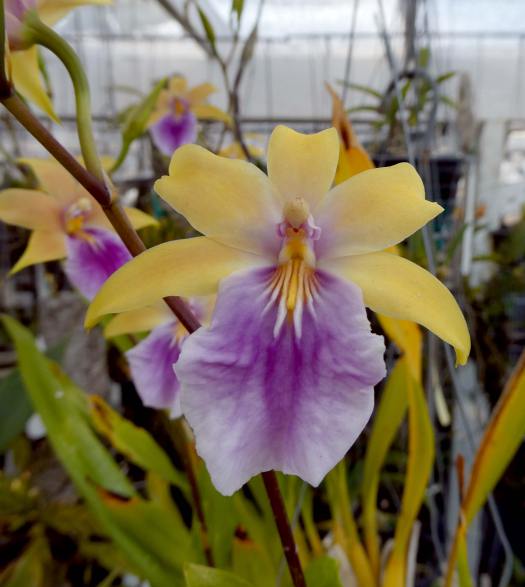 Miltonia regnelii f. aurea |
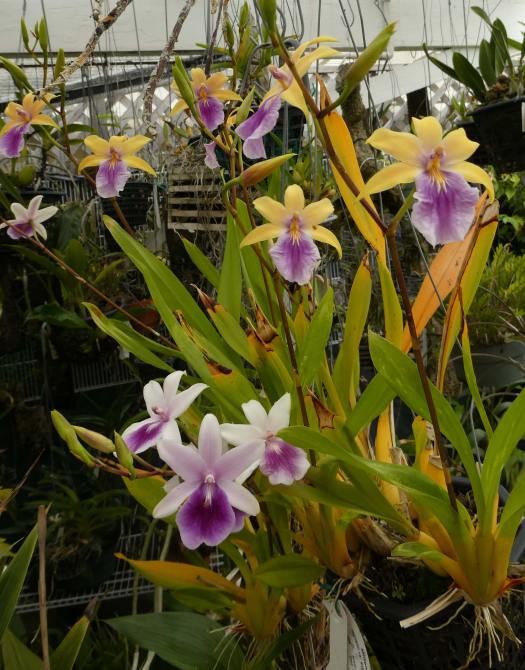
Miltonia regnelii, two formsThe typical form has larger and flatter flowers. The petals of the aurea form tend to reflex, but the color is wonderful. |

Masdevallia sp., floribunda type (purple)Flowers are smaller than those of my Masd. floribunda, but the color is very nice. (Purple vs. brown) It is also even more floriferous than the Masd. floribunda plant. |
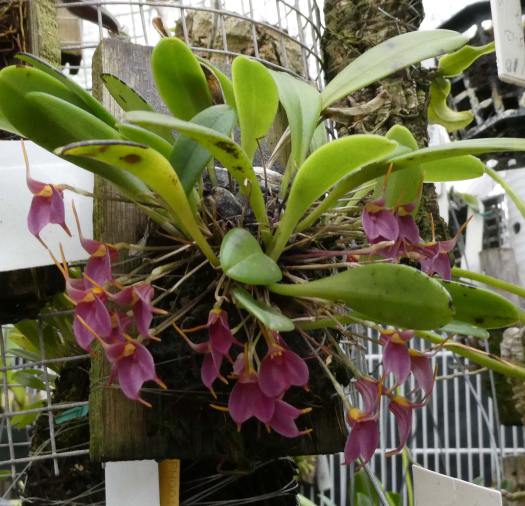 |
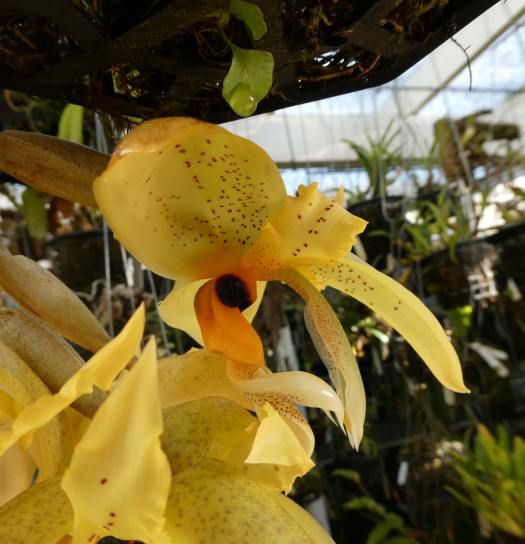 |
|
Stanhopea wardiiThis plant developed four spikes. The first two opened about a week apart, then the last two are getting close, will probably open about the same time in a few days. And two more plants of this species are coming along soon. This is compensation for this summer's performance by Stan. tigrina, where three plants did their thing all within about a week when I was traveling, so I came home to spent flowers. This show will last much longer even though each bloom only persists for a few days. Check out this video that I captured a couple of years ago, catching Stan. wardii in the act of opening. The whole event takes about a minute and a half - when the flowers open, there is a burst of heady perfume. The video is real-time, not time-lapse. I just put the camcorder on a tripod and let it run. No frames were removed, this is the whole event so watch to the end. |
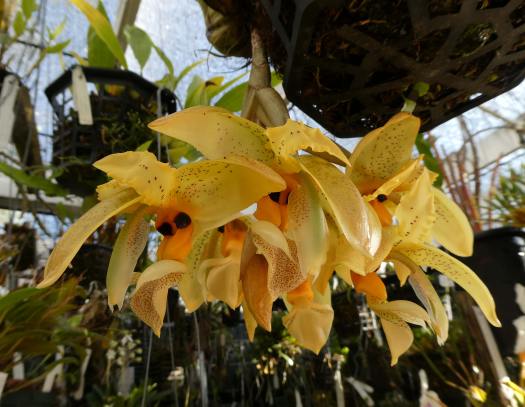 |
In the greenhouse... |
|
Cyrtorchis chailluanaThis Angraecoid is native to a large part of tropical Africa. This is the best blooming that I have had from the plant so far. |
|
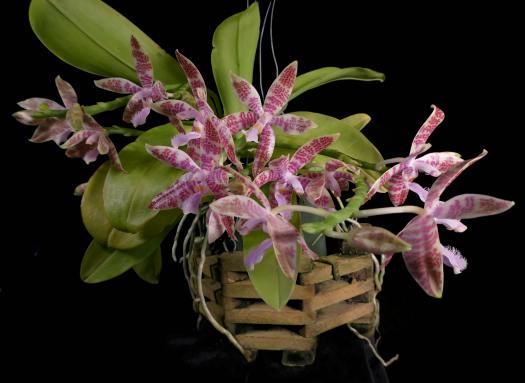
Phalaenopsis hieroglyphicaSpikes can rebloom for several years. However, it typically blooms just once a year. Since new spikes grow while the older ones continue to produce, the flush bloom just keeps getting better. |
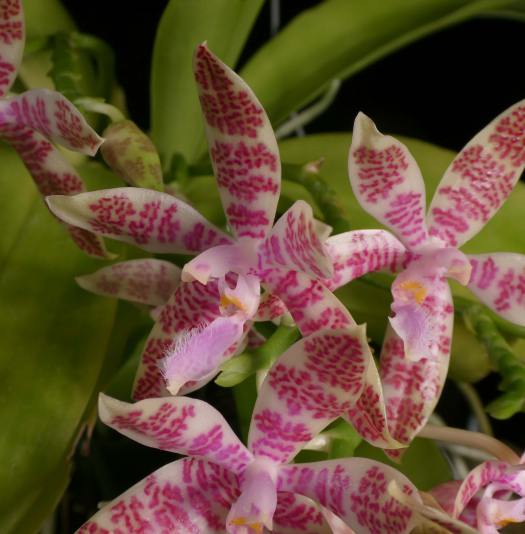 |
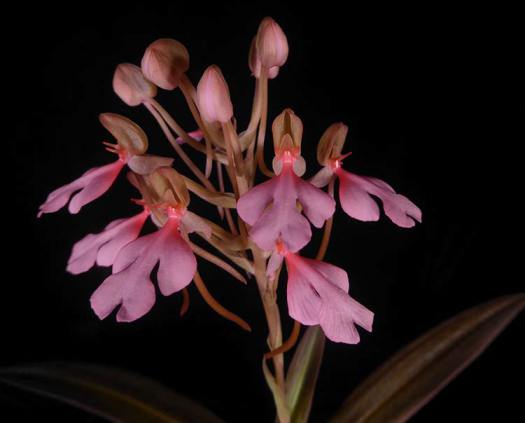
Habenaria rhodocheila 'Cardinal's Roost'Flowers of this species can have colors from dark red to orange to salmon to pink, and also yellow. This one displays a lovely combination of colors. After blooming, it will go dormant throught the winter. I will water very lightly - it should not go bone-dry for long periods of time. In March or April I will increase watering and the new growth will emerge. |
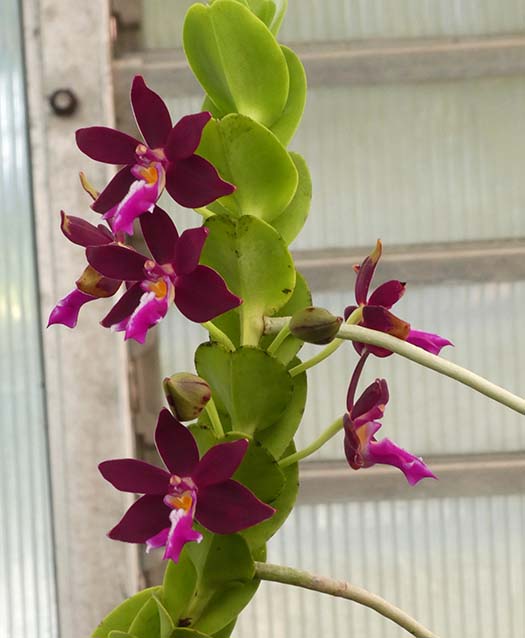
Trichoglottis atropurpurea
|
 crispa.jpg)
 purpurata.jpg)
